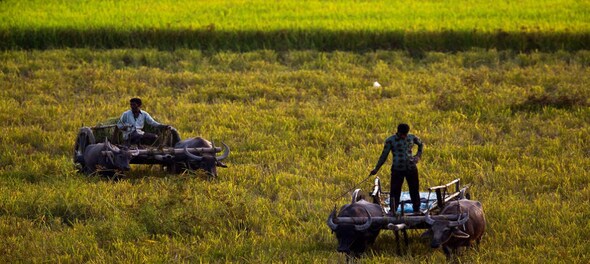
The agricultural sector's vulnerability to the El-Nino effect has direct implications for banks that hold a significant exposure to agriculture loans, according to a report by CLXNS, a digital-first, debt resolution company. As of January 2023, their total exposure to the agriculture sector stood at 14.4 percent of outstanding loans, compared to 10.4 percent in the previous year, the report said.
With historical data indicating the adverse impact of El-Nino on crop production, the report added that concerns are mounting over the potential rise in loan defaults among farmers.
To understand, between 2001 and 2020, India experienced seven El Nino years, four of which resulted in droughts. These drought years, namely 2003, 2005, 2009-10, and 2015-16, witnessed a decline in kharif or summer-sown farm output by 16 percent, 8 percent, 10 percent, and 3 percent respectively, leading to inflationary pressures. The significance of kharif harvests cannot be overlooked as they contribute to nearly half of the country's annual food supply.
In its most recent bulletin, the Reserve Bank of India (RBI) also expressed concerns about the potential consequences of an El-Nino event adversely affecting the southwest monsoon, stating, "Over 2023-24, inflation is expected to range tightly between 5.0 and 5.6 percent, given global uncertainties." This projection underlines the urgency to address the potential impacts of El-Nino on the agricultural sector.
The results from October-December 2022 revealed a 15 percent growth in agricultural lending, with a decline in NPAs (Non-Performing Assets) from Rs 9,146 crore to Rs 8,879 crore during the same period. However, the reverse effect of El-Nino could lead to an increase in NPAs, warranting cautious attention, CLXNS said.
The Reserve Bank of India's Financial Stability Report, released in December 2022, highlighted that agricultural loans accounted for 8.6 percent of the total bad loans of banks, indicating a slight improvement from the previous year's 10 percent. However, experts remain apprehensive that significant changes in weather conditions, particularly those associated with El-Nino, could result in higher NPAs, posing challenges for financial institutions.
Another area of concern lies in the exponential growth of Kisan Credit Cards (KCCs) over the years. At the end of March 2022, the total outstanding KCC loans witnessed a remarkable 25 percent increase, reaching Rs 9.4 lakh crore, compared to Rs 7.5 lakh crore a year ago.
Given the impending weather conditions, this substantial growth in KCC loans raises concerns, as farmers and financial institutions face potential risks associated with loan defaults, the report said.
As India braces for the impact of the El-Nino effect, CLXNS added that it is essential for financial institutions and policymakers to proactively address the potential rise in loan defaults among farmers.
"Support measures such as loan restructuring, interest rate relief, and extended repayment schedules should be considered to alleviate the financial burden on farmers and safeguard the stability of the agricultural sector," 5t added.
(Edited by : Anshul)
Check out our in-depth Market Coverage, Business News & get real-time Stock Market Updates on CNBC-TV18. Also, Watch our channels CNBC-TV18, CNBC Awaaz and CNBC Bajar Live on-the-go!


Lok Sabha elections 2024: 28% of candidates contesting in fourth phase are 'crorepatis'
May 9, 2024 4:29 PM
Free poha-jalebi to movie ticket discounts: How cities struggling with 'urban apathy' are luring voters to polling booths
May 9, 2024 3:17 PM

